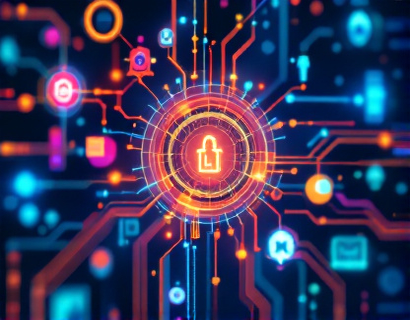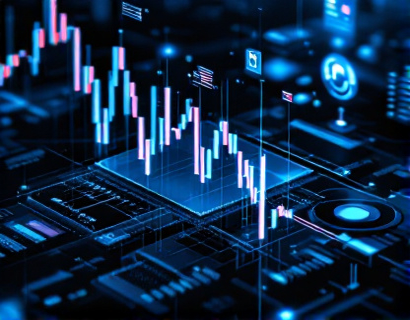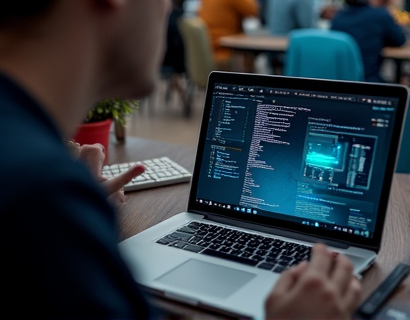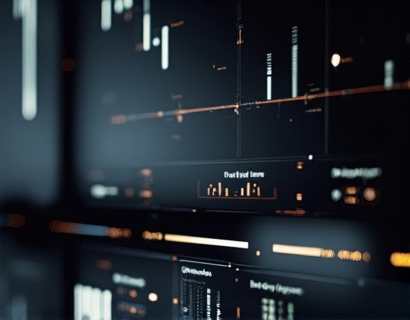Ethereum Layer 2: 2025 Insights for Developers and Enthusiasts on Scalability and Interoperability
As the Ethereum ecosystem continues to evolve, Layer 2 solutions have emerged as a critical component in addressing scalability and interoperability challenges. This comprehensive guide aims to provide developers and enthusiasts with essential insights and updates on the latest Layer 2 technologies, helping them navigate the dynamic and rapidly changing landscape of Ethereum.
Layer 2 solutions are designed to enhance the performance of the Ethereum network by processing transactions off the main chain, thereby reducing congestion and lowering transaction fees. These solutions include state channels, sidechains, and rollups, each with its unique approach and benefits. Understanding the intricacies of these technologies is crucial for anyone looking to stay ahead in the Ethereum space.
Understanding Rollups
Rollups are one of the most promising Layer 2 solutions, offering significant improvements in scalability and cost efficiency. There are two main types of rollups: Optimistic Rollups and ZK Rollups.
Optimistic Rollups bundle multiple transactions into a single transaction on the main Ethereum chain, assuming all transactions are valid. If any transaction is found to be invalid, the rollup can be challenged, and the fraudulent transaction is reversed. This approach significantly reduces the load on the main chain while maintaining security through a challenge period.
ZK Rollups, on the other hand, use zero-knowledge proofs to bundle and verify transactions off-chain. These proofs ensure that all transactions are valid without revealing the transaction details, providing a higher level of privacy and security. ZK Rollups are generally more complex but offer faster finality and lower fees compared to Optimistic Rollups.
Both types of rollups have gained traction in the Ethereum ecosystem, with several projects and platforms already implementing them. For developers, understanding the differences and choosing the right type of rollup for their application is essential for optimizing performance and cost.
State Channels: A Closer Look
State channels are another Layer 2 solution that enables multiple transactions to occur off the main chain, with the final state being submitted to the Ethereum network. This method is particularly useful for applications that require frequent and fast transactions, such as gaming and decentralized finance (DeFi).
In a state channel, two or more parties open a channel by depositing funds into a smart contract. Transactions are then executed off-chain, and the final state of the channel is locked and submitted to the main chain. This approach minimizes the number of on-chain transactions, reducing gas fees and increasing transaction speed.
For developers, implementing state channels involves managing the opening and closing of channels, handling transaction batches, and ensuring the security and integrity of the off-chain transactions. Libraries and frameworks are available to simplify this process, but a solid understanding of the underlying mechanics is necessary.
Interoperability: Bridging the Gap
Interoperability is a key aspect of the Ethereum ecosystem, enabling different blockchain networks to communicate and transfer assets seamlessly. Layer 2 solutions play a crucial role in enhancing interoperability, allowing for more complex and interconnected decentralized applications (dApps).
Cross-Link protocols such as Polygon and Binance Smart Chain (BSC) provide bridges that connect Ethereum to other blockchains, facilitating asset transfer and data exchange. These bridges often utilize sidechains or wrapped tokens to ensure compatibility and security.
For developers, building cross-chain applications requires a deep understanding of interoperability protocols and the ability to integrate multiple blockchain environments. This not only expands the user base but also opens up new opportunities for decentralized services and applications.
Current Trends and Developments
The Layer 2 space is rapidly evolving, with several trends and developments worth noting in 2025. One significant trend is the increasing adoption of ZK Rollups, driven by their superior performance and privacy features. Projects like Arbitrum and Optimism are leading the charge, attracting major DeFi and NFT platforms to migrate to their networks.
Another trend is the growth of hybrid solutions that combine multiple Layer 2 techniques to leverage their respective strengths. For example, combining rollups with sidechains can offer both scalability and interoperability benefits, creating more robust and flexible ecosystems.
Regulatory attention is also on the rise, with various jurisdictions starting to explore frameworks for decentralized finance and Layer 2 technologies. Developers and enthusiasts should stay informed about regulatory developments to ensure compliance and navigate potential challenges.
Best Practices for Developers
For developers looking to implement Layer 2 solutions, several best practices can help ensure success:
- Understand the core principles and mechanics of the chosen Layer 2 technology to effectively integrate it into your application.
- Utilize established libraries and frameworks to simplify development and reduce the risk of errors.
- Conduct thorough testing, including off-chain transaction validation and on-chain submission processes, to ensure reliability and security.
- Monitor performance metrics and user feedback to continuously optimize and improve the user experience.
- Stay updated with the latest developments and community discussions to leverage new features and best practices.
By following these practices, developers can build scalable and efficient dApps that take full advantage of Layer 2 solutions.
Future Outlook
Looking ahead, the Layer 2 ecosystem is poised for significant growth and innovation. The Ethereum 2.0 upgrade, with its shift to a proof-of-stake consensus mechanism, is expected to further enhance the network's scalability and reduce costs, making Layer 2 solutions even more attractive.
Additionally, the integration of Layer 2 technologies with other blockchain projects and the expansion into new use cases, such as Web3 and metaverse applications, will continue to drive adoption and development. The community's ongoing efforts to improve interoperability and security will also play a crucial role in shaping the future of the Ethereum ecosystem.
For enthusiasts and developers, staying informed and engaged with the community is key to staying ahead in this dynamic field. Participating in forums, contributing to open-source projects, and exploring new technologies will not only enhance your knowledge but also contribute to the broader ecosystem's growth.










































